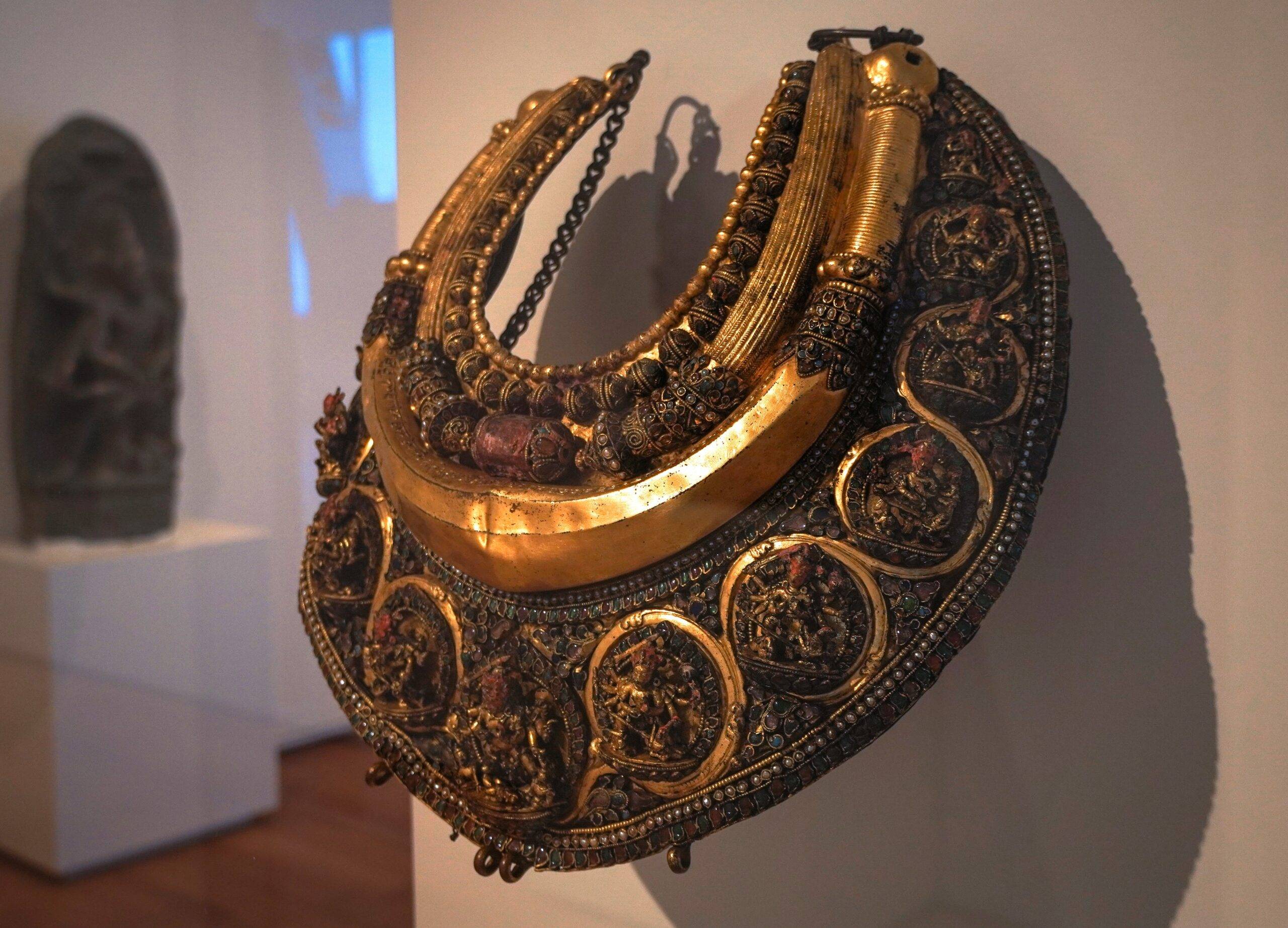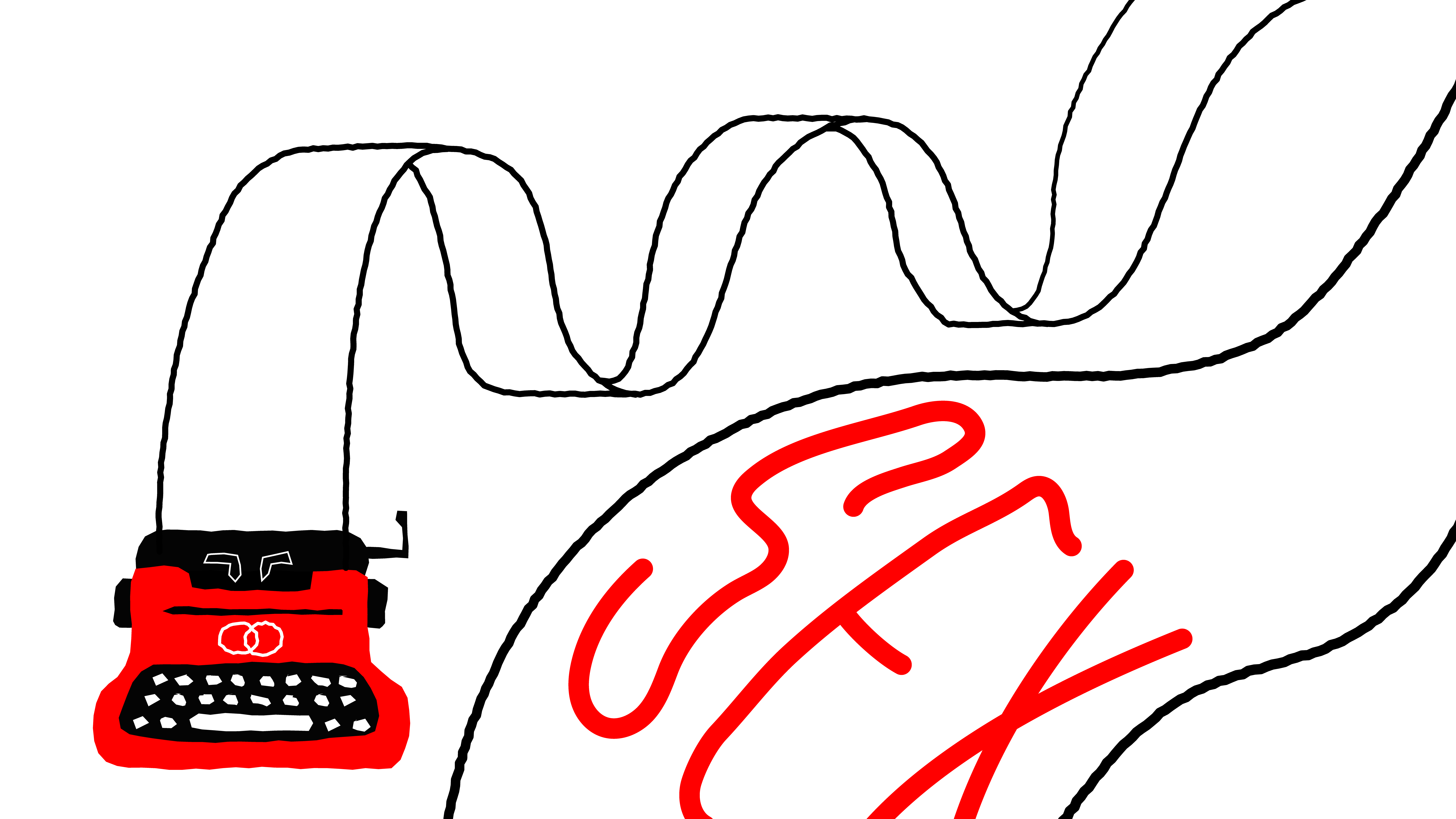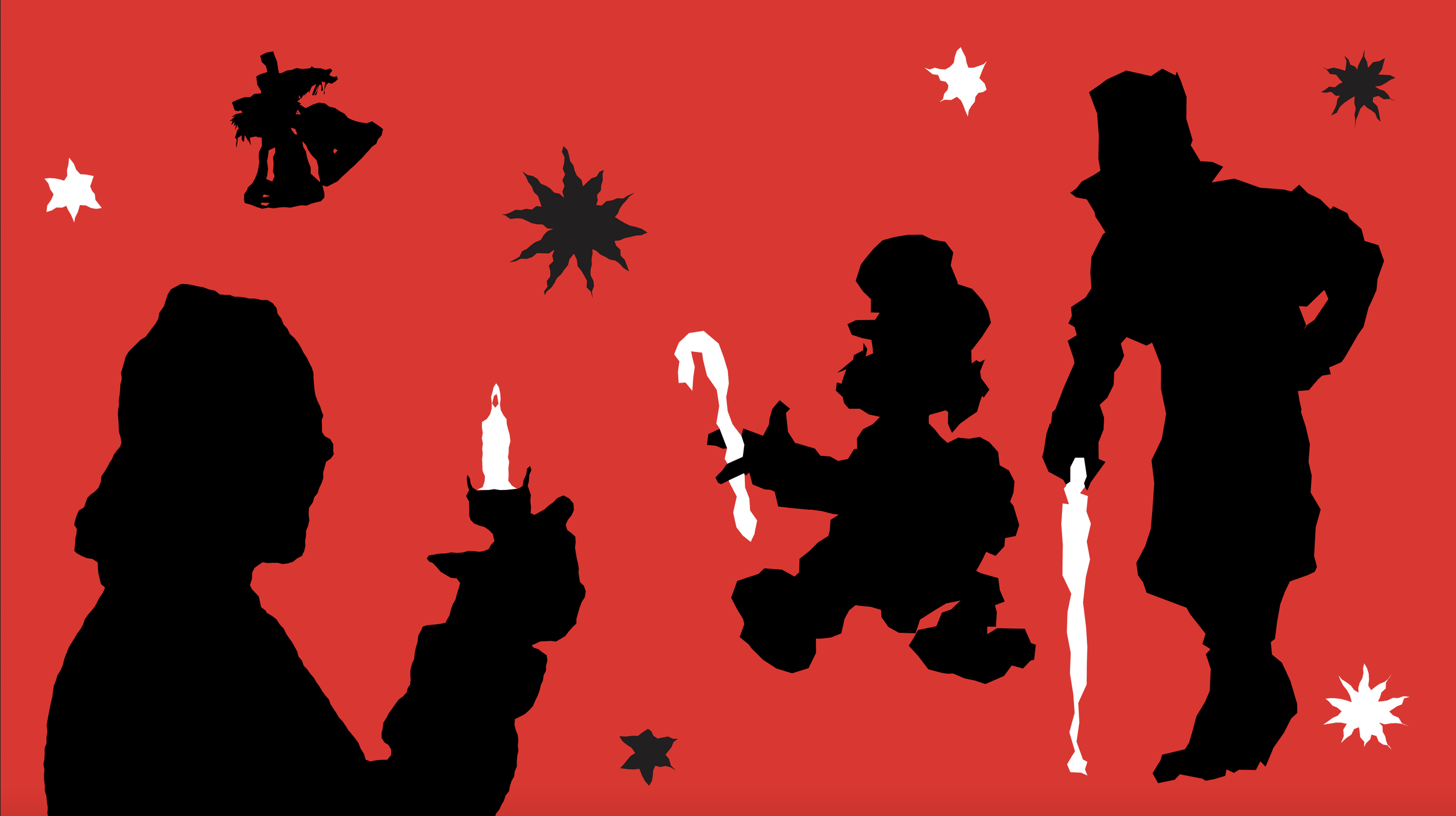
Every year during the major Nepali Hindu festival, Dashain members of the Nepal Heritage Recovery Campaign hope that this will be the year that the Taleju necklace is returned to them.
“Whenever the festival arrives, we talk about how great it would be if we get the necklace back during this auspicious time,” said Roshan Mishra, a heritage conservationist and member of the campaign. As the Taleju temple opens only on the ninth day of Dashain every year, thousands of people wait in line for hours just to get a glimpse of the statue of the Taleju Goddess, an important patron deity of Kathmandu Valley.
But, for Mishra and many other Taleju devotees, another year passed by without seeing the finely crafted necklace filled with semi-precious stones the deity once wore.
On display in Gallery 141 (Arts of Asia) at the Art Institute of Chicago, the necklace is a 17th-century inscribed gilt-copper artifact first loaned to the museum in 1976 by the Alsdorf Foundation, a Chicago-based art institution. The foundation bought the necklace in the same year from Bruce Miller Antiquities of Sausalito, California. Later, in 2010, it donated the necklace to the museum, which displays the decorated artifact with the inscription, “Victory to Mother Goddess [Bhagavati devi Janani]. Hail! [This is the necklace of the king of kings, lord of kings, lord of poets, the victorious Pratapamalladeva (may he be)].”
In the summer of 2021, a Nepali assistant professor at Virginia Tech University, Sweta Baniya, posted a picture of the necklace on X (formerly Twitter), which quickly drew attention from around the world — including from Nepali people and officials — as the museum’s wall text stated that the necklace belonged to the Taleju Goddess. While the necklace had attracted some attention for its artistry, it wasn’t until 2021 that calls for its repatriation began to surface. Since then, several efforts have been made by activists and government officials toward the recovery of this necklace.
The history
Before Nepal was formed, the country was divided into several princely states. In the Kathmandu Valley, the Malla kings were the rulers. The Malla kings had a keen interest in art, culture, and architecture. Several heritage monuments that they built are still intact and attract the attention of millions of tourists in Kathmandu.
Pratap Malla, who ruled from 1641 to 1674, was one of the most popular kings. Art historians and cultural experts who spoke to F Newsmagazine said the necklace was built during his reign. Cultural writer and journalist Aashish Mishra described Pratap Malla as “a king who was also an art connoisseur.”
“He was a lover of arts,” said Mishra. “He was the one who offered this necklace to his kul devata (guardian deity). And after that, it became a part of Taleju goddess and its rituals of worship,” Mishra said.
In 2022, Udhav Karmarcharya, the main priest of Taleju Temple, found a hand-written scroll from his family collection that mentioned the necklace as one of the gifts that was offered to the goddess. “The scroll was written in Nepalbhasa [a language spoken by the indigenous Newa people, said Karmarcharya. “It clearly states that the necklace was offered by Pratap Malla. The description of the necklace in the scroll matches with the artifact that is currently displayed at AIC.”
On its website, AIC offers the following description of the necklace: “This ornament may have been given by King Pratapamalla (r. 1641–74), ruler of the Malla dynasty of Nepal, to Taleju Bhavani, the revered patron goddess of the old palace in Kathmandu and the chief protective deity of Nepal and its royal family. King Pratapamalla may also have worn this collar when he participated in rituals.”
Worshipping Taleju and performing various rituals to strengthen the state’s relationship with the goddess has a long tradition in Nepal. Several Nepali Hindu deities considered Taleju to be one of the manifestations of Durga Bhavani, a major goddess often associated with bravery, protection, strength, and war.
According to Erin Thompson, an art historian and professor at the City University of New York, kings and rulers from Nepal often made offerings to Taleju to strengthen their relationship with Durga.
“Durga is a goddess that fights against death, disorder, and chaos. And so you offer worship to her to ask for her help and protection for you, or your family, and as the titular deity, for Nepal as a whole. That’s why the king gave a necklace for as reinforcing this relationship of protection of Nepal,” said Thompson.
So how did a necklace that belonged to such an important deity end up at AIC in Chicago?
According to The Nepali Times, a Kathmandu-based publication, the necklace was moved from the temple to a nearby museum for safekeeping in the 1970s. In 1976, the necklace disappeared.
“The government wanted to move the treasures for safe-keeping, but it got stolen anyway. The high priests at the time had warned officials that this would anger the powerful Taleju god. Sure enough, within a year, King Mahendra died,” Karmacharya, the eighth generation high priest of the Taleju Temple from the family, told the Nepali Times. Nepal’s monarchy was abolished in 2008.
No one knew the whereabouts of the necklace or who was responsible for its disappearance until an in-depth article on the necklace by ProPublica and Crain’s Chicago Business — published in March — asserted that the necklace was definitely stolen from Nepal.
According to AIC’s provenance, The Alsdorf Foundation purchased it on June 22 from Bruce Miller Antiquities of Sausalito, California, within a year of its theft.
Nepali people want necklace in rightful place
It’s been 47 years since the necklace left Nepal. Before Bajracharya’s tweet, there was no reported uproar among the Nepali community nor known efforts made for its return.
But now that they know its location and its connection to the temple and the goddess, the Nepali people say they want the necklace back. They say that its rightful place is in the temple of the Taleju Goddess.
“The Museum should return the necklace. People should understand that we can’t treat it like a necklace that belongs to a human being. It’s a necklace that belongs to a goddess. It’s not just an accessory. But a part of the goddess itself,” said Aashish Mishra.
The admin of Lost Arts Nepal, a Facebook page dedicated to identifying lost artifacts of Nepal, also wrote that AIC should return the necklace as soon as possible.
“In general, Nepali society and culture revolves around faith and traditions. The deities are the Guardians and our belief in faith keeps us secure, calm, and happy. The absence of the deities of worship creates voids in our faith, many practices and traditions are also lost with it,” an admin of the page, who prefers to stay anonymous, said.
But if and when AIC will return the artifact is a big question.
According to a spokesperson from the museum, AIC is trying its best to address the concerns people have regarding the necklace and its repatriation.
“Repatriation discussions are exceptionally complex and can take significant time, but every effort is made to resolve these matters,” they wrote to F Newsmagazine.
“The Art Institute of Chicago has been in contact with the government of Nepal. We sent a letter in May 2022 and are awaiting a response. We are open to learning about any additional information the government has to share on this matter and will continue working directly with the government of Nepal.’ the statement further reads.
Sarita Subedi, an archaeology officer at Nepal’s Department of Archaeology told F Newsmagazine that in their letter AIC asked for photos of the necklace taken before its theft.
Karmarcharya feels that this demand of AIC is invalid. He said that the museum needs to understand the cultural nuances before making such demands.
“In our culture, we strictly prohibit people from taking pictures of our precious deities. So I don’t think anyone took a picture of the necklace back then. AIC needs to be more culturally sensitive during the repatriation process,” Karmarcharya said.
Subedi said that except for the pictures, the department has collected all the necessary documents, including the scroll Karmacharya found.
“We will send all the documents soon. But the inscription itself is an irrefutable claim that the necklace belongs to Nepal,” she said.
Returning artifacts can be time-consuming and Nepali heritage activists who spoke to F Newsmagazine said they are aware of that.
“However, the museum needs to be transparent and communicate the process of repatriation to everyone,” said Mishra.
As conversations about the repatriation of artworks to their countries of origin and communities have flourished recently, several other art institutes and museums in the country are becoming more transparent about their provenance.
The Museum of Fine Arts in Boston allows visitors to search its provenance online. The San Antonio Museum of Art and the Denver Museum of Art allow users to search for repatriated objects.
The AIC, by comparison, does not have a section on its website dedicated to repatriated objects, nor does it mention whether an artifact on display has been claimed by other community members and countries. In fact, in 2022, according to ProPublica’s article, it didn’t repatriate any objects, even though several countries have made and continue to make claims of ownership of objects in the AIC possession.
AIC’s failure to release a statement explaining the status of the repatriation, even after ProPublica and Crain’s Chicago Business article, has raised flags among Nepali heritage activists, who are concerned about how long Nepal will have to wait to get the necklace back.
“We know that repatriation takes time. But if private collectors have returned artifacts to Nepal why can’t AIC do it,” said Mishra.
“AIC has remained silent on this matter. They need to cooperate and regularly provide updates on the repatriation of the necklace. The museum needs to realize there’s a reason why so many people are demanding this particular necklace back. It’s because the necklace belongs to Taleju, our titular goddess. It’s our living culture,” said Mishra. “I don’t know what more proof the museum is waiting for when the inscription on the necklace itself verifies that it belongs to Nepal.”
One of the reasons Thompson believes the Museum hasn’t returned the necklace is because if it does, it will have to return several other artifacts that other communities also claim.
The investigation by ProPublica and Crain’s Chicago Business found that four artifacts, including the necklace, given to the museum by the Alsdorf family, were looted from Nepal or illegally exported. In addition, the investigation found that 24 objects from the Art Institute’s Alsdorf collection have incomplete provenances by modern standards.
Thompson said that if the museum returns the necklace, AIC will have to look at all the other “donations” made by the Alsdorf family, which would present them with more challenges.
“They know that if they return this necklace, they’re going to have to also return a whole lot of other artifacts to Nepal and other Asian countries,” said Thompson. “I’m saying this because this donation of the necklace was made by James and Marilynn. If you give that back, then you have to look into all the other donations they have made, which have been I think hundreds of objects to the Art Institute. So they are worried about a large set of their objects. It’s not just the necklace, it’s my theory,” she said.
It’s not yet clear when the necklace will be returned. Kept in a protective glass case, the necklace is more than 7,000 miles from the temple.
Karmacharya believed that the Nepali government should use all diplomatic means to get the necklace back.
“We have all the evidence. We are thankful that the museum protected the necklace for so many years. But the Nepal government should quickly solve the problem and use all the diplomatic tactics to get it back,” Karmacharya said.
Mishra said he hopes the museum will also soon realize what the necklace means to the people of Nepal and return it to the country voluntarily.
“Nepal was going through political upheavals due to which we didn’t have the luxury to think about our heritage before. But now we are more stable and we want heritages back. Our objects were never made so they could be kept inside museums. They are like living objects made to exist in open spaces and live with people,” said Mishra.
“When we get the necklace back, we won’t display it in a museum. We will offer it to the goddess and will keep it there. Because it is there where it rightfully belongs,” he added.







